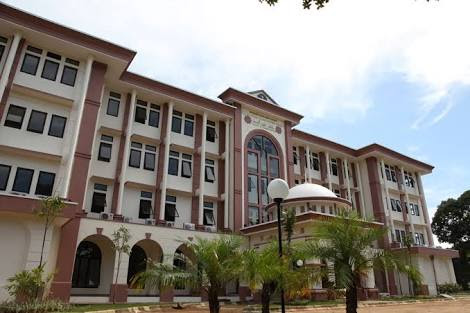THE DESCRIPTION OF MATHEMATICAL PROBLEM SOLVING ON SPLDV MATERIAL BASED ON STUDENT’S PERSONALITIES
Abstract
This qualitative study proposed to describe the problem solving systems of two variables linear equations topic (SPLDV) in terms of students’ personality tendency types; sanguine, choleric, melancholy, and phlegmatic. The researcher was the major instrument in the study, guided by supporting instruments such as personality classification test, mathematical problem-solving task and interview guidelines. The subject of the research was the students of XI-Science class, Senior High School 1 Bone-Bone which consist of four objects where one object represented each personality types. At the first stage, the researcher formulated indicators of mathematical problem solving, thinking process indicator, and validated the supporting instrument. The subjects chosen on each personality types were the students with dominant scores based on the personality type classification test included the similarity of mathematics value. The description of mathematical problems solving has been found through the provision of problem-solving test, and confirmed by in-depth interview. The problem-solving process observed by following the problem solving steps proposed by Polya covering: (a) understand the problem, (b) make a plan, (c) carry out the plan, and (d) look back at the completed solution. To obtain valid data, the researcher conducted triangulation time by giving similar tests at different times. The results show that: 1) Sanguine subjects could not follow the problem solving steps proposed by Polya completely, the subjects understood the subject matter without explicitly wrote what was known and what was asked on the questions, they applied elimination method to solve the problem without knowing any other methods, they did not double check their answers, they were rushing to give the answer and tend to make mistakes in counting the negative and positive numbers, 2) choleric subject could not follow the Polya’s problem solving steps completely, the subjects understood the problems without explicitly wrote what was known and asked in the questions, they did not know the name of method used, checked the answers just by re-examined the steps done, and tended to make mistakes in dividing numbers; 3) melancholy and phlegmatic subjects followed Polya’s problem solving steps, understanding the problem by writing explicitly what was known and asked in the questions, planned and solved the problems by using the elimination method followed by substitution, rechecked the answer obtained used substitution method, and tended to have difficulties to change the verbal language into a mathematical sentence.
Downloads
References
Abidin, M. Z. (2014). Deskripsi pemecahan masalah matematis materi SPLDV berdasarkan kecenderungan tipe kepribadian siswa. Tesis tidak diterbitkan. Makassar : Universitas Negeri Makassar.
Littauer, F. (1996). Personality plus. Jakarta : Bina Aksara Rupa.
Dewiyani, S. (2008). “pengelompokan siswa berdasarkan tipe kepribadian sebagai sarana dalam pembelajaran pemecahan masalah matematika.” Makalah Disajikan pada Seminar Nasional Matematika dan Pendidikan Matematika di Universitas Pendidikan Ganesha Singaraja, Singaraja, 21 Juni 2008.
Polya, G. (1957). How to solve it: a new aspect of mathematical model. New York : Garden City.
Yuwono, A. (2010). Profil siswa SMA dalam memecahkan masalah matematika ditinjau dari tipe kepribadian. Tesis Tidak Diterbitkan. Surakarta: Universitas Sebelas Maret.


